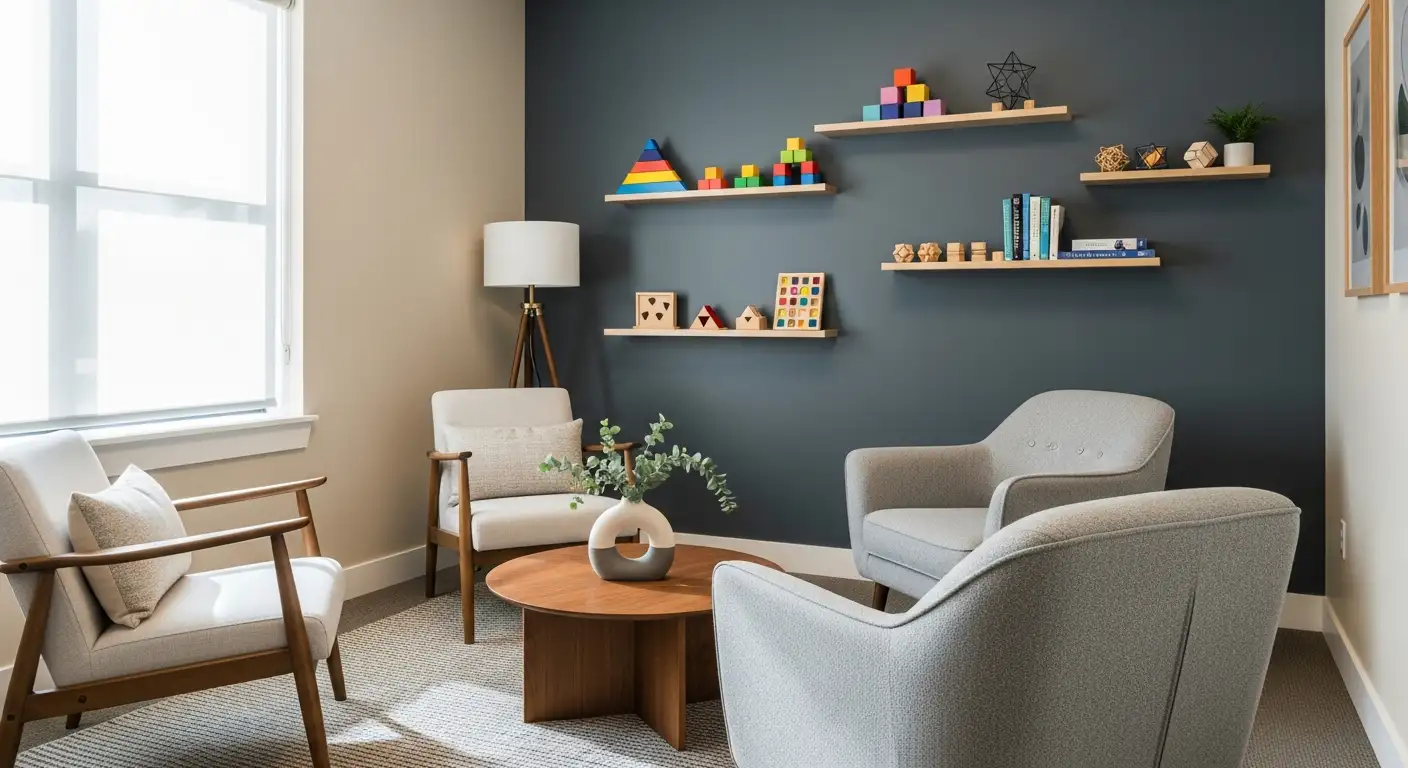Understanding Autism and Special Interests
Autism is a neurodevelopmental disorder that affects individuals in various ways. One common aspect of autism is the presence of special interests. These interests are highly focused and intense, often capturing the individual's attent

Importance of Special Interests in Autism
Special interests are extremely common among people with autism, with 75 to 95 percent of individuals on the spectrum having them. These interests can manifest in a wide range of forms, from collecting items to focusing intensely on narrow topics such as insects fighting.
Research conducted over the past 15 years indicates that special interests are valuable to individuals with autism. They play a significant role in building self-confidence, helping cope with emotions, and aiding in social skill development and learning. Autistic children with intellectual disability may exhibit special interests in the form of repetitive behaviors, while those without intellectual disability may develop areas of precocious competency in their interests. Some special interests are transient, while others last a lifetime.
Autistic individuals often find enrichment through their special interests. Studies have shown that these interests are calming, positive, and contribute to increased satisfaction with social contacts and leisure time. Preliminary research suggests that the brain's reward system in people with autism may respond more to special interests than to interpersonal experiences, indicating that special interests engage different brain regions in individuals with autism.
Impact of Special Interests on Individuals
Special interests have a profound impact on individuals with autism. They provide a sense of identity, allowing individuals to express their unique personality and explore their passions. Special interests can also serve as a source of motivation and enjoyment, promoting engagement and overall well-being.
For children with autism, special interests can be particularly beneficial. These interests offer a way to connect with others and facilitate social interactions. They can become conversation starters, providing common ground for communication and shared experiences. Parents and educators can leverage special interests to enhance learning opportunities and encourage participation in various activities.
It is important to recognize and respect the significance of special interests in the lives of individuals with autism. These interests should be embraced and supported, as they contribute positively to personal growth, emotional well-being, and social development.
Understanding the importance and impact of special interests in autism sets the stage for exploring strategies and tools, such as noise-canceling headphones, that can help individuals with autism navigate sensory sensitivities and create a conducive environment for their special interests.
Physical Activity and Autism
Engaging in physical activity can have numerous benefits for individuals with autism spectrum disorder (ASD). Research has shown that physical activity can help reduce maladaptive behaviors and promote positive social skills and behavior in young children and adolescents with autism [2]. In this section, we will explore the benefits of physical activity for individuals with autism and the important role of parental involvement in physical activity programs.
Benefits of Physical Activity for Individuals with Autism
Physical activity has been found to have a positive impact on individuals with autism, offering a range of benefits. Some of the key benefits include:
- Improved social skills: Participating in physical activity, such as dance, can enhance social involvement, communication skills, and body awareness. It provides opportunities for individuals with autism to interact with peers, practice social interactions, and develop meaningful relationships.
- Reduced maladaptive behaviors: Engaging in regular physical activity can help reduce maladaptive behaviors commonly associated with autism. Studies have shown that physical activity programs have positive effects on behaviors such as self-injury, impulsivity, decreased attention, anxiety, depression, and sleep disruption. By providing an outlet for energy and promoting emotional well-being, physical activity can contribute to overall behavior management.
- Enhanced physical well-being: Physical activity promotes physical fitness, coordination, and motor skills development in individuals with autism. It can contribute to improved physical health, increased body awareness, and better overall well-being.
- Improved mental health: Participating in physical activity has been linked to positive effects on mental health for individuals with autism. It can help reduce stress, anxiety, and depression, leading to improved emotional well-being and quality of life.
Role of Parental Involvement in Physical Activity Programs
Parental involvement plays a crucial role in ensuring the success and effectiveness of physical activity programs for children with autism. Research has demonstrated that when parents actively participate in their child's physical activity endeavors, better outcomes are achieved.
Parents can provide support, encouragement, and guidance to their children during physical activity sessions. They can help create a supportive and inclusive environment that promotes engagement and enjoyment. Additionally, parents can collaborate with professionals, such as therapists or coaches, to develop individualized plans that address the specific needs of their child.
By actively engaging in physical activity programs with their child, parents can model positive behavior, reinforce skills learned during sessions, and provide opportunities for generalization of skills to other settings. This parental involvement can lead to better behavioral changes, increased engagement, and improved outcomes for their child.
It is essential to recognize that physical activity programs for children with autism should be individualized and tailored to their specific needs. The focus should be on minimizing core characteristics associated with autism, while also addressing comorbid symptoms such as self-injury, impulsivity, decreased attention, anxiety, depression, and sleep disruption.
In conclusion, physical activity offers numerous benefits for individuals with autism, including improved social skills, reduced maladaptive behaviors, enhanced physical well-being, and improved mental health. Parental involvement in physical activity programs is crucial for achieving positive outcomes. By actively participating and supporting their child's physical activity endeavors, parents can contribute to their child's overall well-being and development.
Sensory Sensitivities in Autism
Individuals with autism often experience sensory sensitivities that can make the world around them overwhelming. Understanding these sensory processing differences is crucial in providing the necessary support and accommodations. In this section, we will explore sensory processing differences in autism and the role of noise-canceling headphones in managing these sensitivities.
Sensory Processing Differences in Autism
According to the Diagnostic and Statistical Manual of Mental Disorders 5th edition (DSM-V), up to 90% of individuals with autism spectrum disorder (ASD) experience unusual responses to sensory stimuli, leading to prevalent behavioral responses to sensory stimuli. This can manifest as both hyper-reactivity and hypo-reactivity to sensory input. Some individuals may be hypersensitive to certain sounds, lights, textures, or smells, while others may seek out sensory stimulation.
These sensory sensitivities can significantly impact the daily lives of individuals with autism, making it challenging to navigate various environments and engage in activities. It is essential to create sensory-friendly environments and provide tools that can help individuals with autism regulate their sensory input.
The Role of Noise-Canceling Headphones
Noise-canceling headphones can play a crucial role in providing comfort and support for individuals with autism, allowing them to regulate their sensory input and find solace in sound. These headphones work by reducing background noise and blocking out external stimuli, creating a more controlled auditory environment.
By wearing noise-canceling headphones, individuals with autism can minimize sensory distractions and better manage sensory overload. The headphones help create a sense of calm and focus, allowing individuals to engage in tasks, activities, and social interactions more effectively.
Not only do noise-canceling headphones reduce the impact of external sounds, but they also allow individuals to focus on specific sounds that they find comforting or enjoyable. This ability to control their auditory environment can be empowering for individuals with autism, providing relief from stress and overwhelming situations.
For parents and caregivers, providing noise-canceling headphones to their children with autism can be a valuable tool in helping them navigate sensory-rich environments, such as crowded malls, classrooms, or public transportation. By minimizing sensory overload, these headphones can enhance the overall quality of life for individuals with autism.
In the next section, we will explore different types of noise-canceling headphones and their specific features that make them suitable for individuals with autism.
Types of Noise-Canceling Headphones
When it comes to finding the perfect headphones for individuals with autism, noise-canceling headphones are often a popular choice. These headphones are specifically designed to reduce the impact of external sounds and provide a more controlled auditory environment. There are two main types of noise-canceling headphones: active noise canceling (ANC) headphones and passive noise isolation (PNI) headphones.
Active Noise Canceling (ANC) Headphones
Active noise canceling (ANC) headphones utilize advanced technology to cancel out ambient noise by creating equal but opposite noise signals. This creates a surround sound experience while protecting the ears from loud sounds [3]. ANC headphones work by using built-in microphones to pick up noise signals from the environment. The headphones then generate sound waves that are 180 degrees out of phase with the incoming noise, effectively canceling it out within the headphones themselves.
One advantage of ANC headphones is their ability to provide a more immersive listening experience. By canceling out external noise, individuals can focus on the sounds they want to hear, such as music or spoken words. Some ANC models also allow for adjusting the level of external sounds that the individual can hear, providing more control over their auditory environment.
Passive Noise Isolation (PNI) Headphones
Passive noise isolation (PNI) headphones, on the other hand, block out ambient noise by physically molding to the ear and creating a seal. This isolation helps to reduce the impact of external sounds, allowing for listening to music or other audio at lower volumes without being disturbed by the surrounding environment. PNI headphones do not actively generate sound waves to cancel out noise; instead, they rely on the design of the ear cups and materials used to create a barrier between the ears and the outside world.
PNI headphones are often more lightweight and compact compared to ANC headphones, making them a portable and comfortable option. They are particularly useful in environments where noise-canceling technology may not be necessary, but a reduction in background noise is still desired.
Choosing between ANC and PNI headphones depends on the specific needs and preferences of the individual with autism. Some individuals may benefit from the immersive experience provided by ANC headphones, while others may find PNI headphones more comfortable and suitable for everyday use. It's important to consider factors such as noise sensitivity, the intended use of the headphones, and the individual's personal preferences when selecting the right type of noise-canceling headphones.
In the next section, we will explore the benefits of noise-canceling headphones for individuals with autism, including how they can help manage sensory overload and promote calm and focus.
Benefits of Noise-Canceling Headphones for Autism
For individuals on the autism spectrum, noise-canceling headphones can provide significant benefits in managing sensory sensitivities and promoting a sense of calm and focus. These headphones help reduce background noise and allow individuals to listen to specific sounds in noisy environments. Let's explore the advantages in more detail.
Managing Sensory Overload
Autistic individuals often experience sensory overload, where their senses become overwhelmed by the surrounding environment. This can lead to anxiety, stress, and difficulty concentrating. Noise-canceling headphones can help mitigate sensory overload by reducing or eliminating background noise, allowing individuals to create a more soothing auditory environment.
In noisy settings such as malls, airports, or classrooms, wearing noise-canceling headphones enables individuals to listen to calming sounds or music of their choice. This helps to filter out excessive auditory input and maintain focus and concentration [6]. By managing sensory overload, these headphones can enhance comfort and reduce anxiety levels.
Promoting Calm and Focus
Noise-canceling headphones have been shown to lower anxiety levels and improve communication skills for individuals on the autism spectrum. By reducing auditory distractions, these headphones create a quieter and more peaceful environment, which can contribute to a sense of calmness. This, in turn, may improve an individual's ability to engage in social interactions and communication.
Wearing noise-canceling headphones can also be empowering for autistic individuals. It allows them to assert their independence and control over their listening environment, providing a sense of security. By regulating their auditory input, individuals can better manage their sensory needs and reduce potential stressors.
Furthermore, noise-canceling headphones can enhance the quality of life for both children and adults with autism. They offer relief from overwhelming situations and provide a means of self-regulation. By creating a more comfortable auditory experience, these headphones enable individuals to better navigate their surroundings and engage with the world around them.
By utilizing noise-canceling headphones, individuals with autism can effectively manage sensory sensitivities, reduce anxiety, and enhance their overall well-being. These headphones offer a practical solution for creating a more calm and focused environment, helping individuals with autism thrive in various social and sensory contexts.
Considerations When Using Headphones
When selecting headphones for individuals with autism, there are a few important considerations to keep in mind to ensure a positive experience. These considerations include comfort and fit, as well as volume settings and auditory health.
Comfort and Fit
Comfortable headphones are crucial for individuals with autism, as they can enhance the overall experience and minimize discomfort. Look for headphones that have a comfortable fit, adjustable headbands, and cushioned ear cups. It's important to ensure that the headphones do not exert excessive pressure on the ears or head, as this can cause distress, especially for individuals with sensory sensitivities [4].
When choosing headphones, consider the weight and size of the device. Opt for lightweight options that won't strain the neck or cause discomfort during extended use. Additionally, headphones with a design that allows for airflow can help prevent excessive heat build-up, reducing discomfort and ensuring a pleasant wearing experience.
Volume Settings and Auditory Health
Properly setting the volume levels on headphones is essential to protect the auditory health of individuals with autism. It's important to find a balance between a comfortable listening experience and avoiding potential harm to the ears. Excessive volume can lead to hearing damage, especially for individuals with sensory sensitivities.
When using headphones, it's recommended to start with a lower volume setting and gradually increase it to a comfortable level. Encourage individuals with autism to listen at a volume that allows them to hear the desired sounds without causing discomfort or risking hearing damage. Regularly reminding and educating individuals about safe volume levels can help protect their auditory health in the long run.
To further ensure auditory health, consider headphones that have built-in volume limiters. These limiters restrict the maximum volume output, providing an added layer of protection for sensitive ears. Some headphones also offer parental controls or settings that allow you to set volume limits, providing additional peace of mind.
By considering comfort and fit, as well as volume settings and auditory health, you can choose headphones that cater to the unique needs of individuals with autism. Remember to prioritize the comfort and well-being of the individual, allowing them to enjoy their auditory experiences while keeping their sensory sensitivities in mind.
References
[1]: https://www.thetransmitter.org/spectrum/the-benefits-of-special-interests-in-autism/
[2]: https://www.ncbi.nlm.nih.gov/pmc/articles/PMC7642468/
[3]: https://www.autismparentingmagazine.com/choosing-noise-canceling-headphones/
[4]: https://www.achievebetteraba.com/blog/headphones-for-autism
[5]: https://www.goldencaretherapy.com/headphones-for-children-with-autism/
[6]: https://www.crossrivertherapy.com/autism/why-do-autistic-people-wear-headphones












